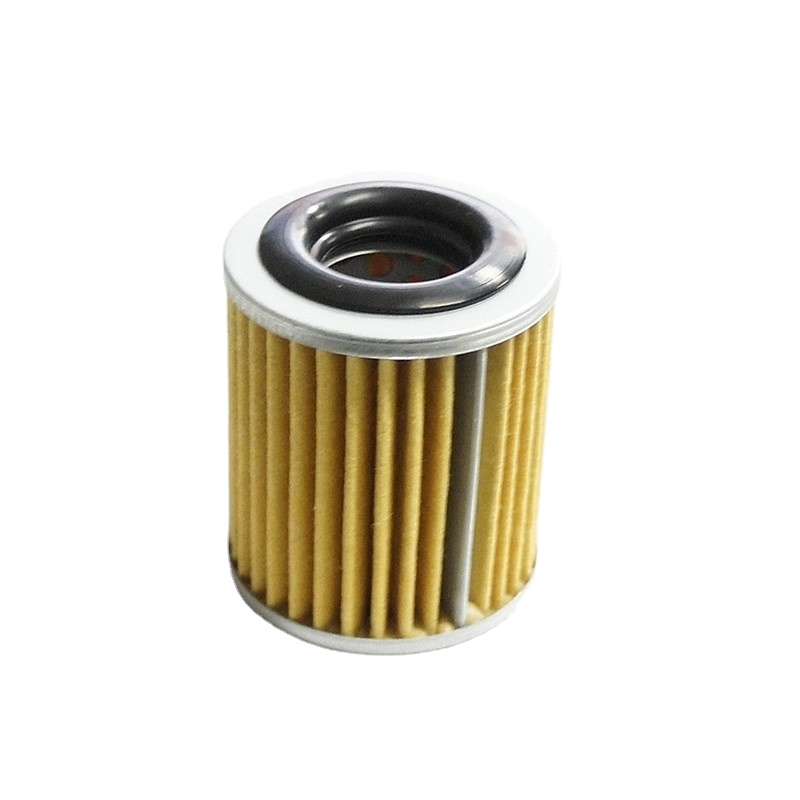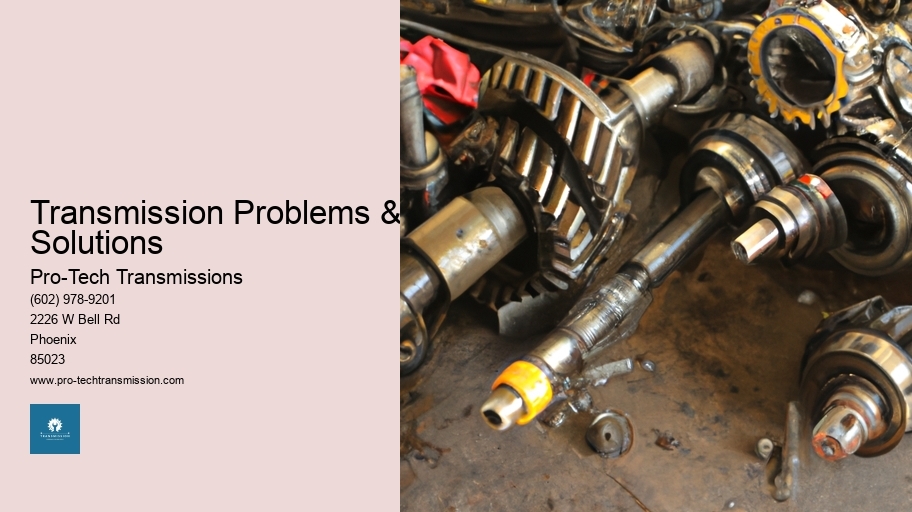Common problems and solutions for Mitsubishi ASX automatic transmission? You’ve come to the right place! Dealing with a finicky gearbox can be a real headache, but understanding the common issues plaguing Mitsubishi ASX automatic transmissions can empower you to tackle them head-on. From sluggish shifting to complete transmission failure, we’ll break down the most frequent problems, their telltale symptoms, and effective solutions.
Get ready to diagnose and potentially fix those transmission woes!
This guide dives deep into the inner workings of your ASX’s automatic transmission, exploring everything from routine maintenance like fluid changes to more complex repairs involving solenoids, valve bodies, and the torque converter. We’ll arm you with the knowledge to identify problems early, prevent costly repairs, and keep your ASX shifting smoothly for years to come. Whether you’re a seasoned DIY mechanic or a car owner looking for a better understanding of your vehicle, this comprehensive guide is your go-to resource.
Common ASX Automatic Transmission Issues: Common Problems And Solutions For Mitsubishi ASX Automatic Transmission

The Mitsubishi ASX, while generally reliable, isn’t immune to automatic transmission problems. Understanding these common issues can help owners proactively address potential problems and ensure the longevity of their vehicle. This section details five frequently reported transmission problems, their symptoms, causes, and potential solutions. Early identification is key to preventing more extensive and costly repairs.
Five Frequently Reported Automatic Transmission Problems in the Mitsubishi ASX
Several factors contribute to automatic transmission failures in the ASX, ranging from normal wear and tear to manufacturing defects or improper maintenance. Ignoring early warning signs can lead to significant damage and expensive repairs. Therefore, understanding the symptoms associated with these problems is crucial for timely intervention.
| Problem | Symptoms | Causes | Potential Solutions (brief) |
|---|---|---|---|
| Slipping Transmission | Delayed engagement, rough shifting, slipping gears, inability to accelerate smoothly, whining noises during acceleration. | Low transmission fluid, worn clutch packs, faulty valve body, damaged torque converter. | Transmission fluid and filter change, valve body repair or replacement, torque converter replacement, complete transmission overhaul. |
| Hard Shifting | Abrupt and jarring shifts between gears, noticeable jolts or bumps during gear changes. | Low or contaminated transmission fluid, worn synchronizers, problems with the shift solenoids or valve body. | Transmission fluid and filter change, solenoid replacement, valve body repair or replacement. |
| Transmission Leaks | Visible fluid leaks underneath the vehicle, low transmission fluid level, noticeable fluid stains on the ground. | Damaged seals, worn gaskets, cracked transmission pan, damaged transmission lines. | Seal and gasket replacement, transmission pan repair or replacement, repair or replacement of damaged transmission lines. |
| Overheating Transmission | Unusual high temperature readings, burning smell emanating from the transmission area, transmission fluid appearing dark or burnt. | Low transmission fluid, clogged transmission cooler, faulty transmission cooler lines, internal transmission problems. | Transmission fluid and filter change, transmission cooler cleaning or replacement, repair or replacement of transmission cooler lines, transmission repair or replacement. |
| Complete Transmission Failure | Complete loss of power, inability to shift gears, loud noises emanating from the transmission, warning lights illuminated on the dashboard. | Severe neglect, multiple underlying issues, catastrophic failure of internal components. | Transmission replacement, extensive repairs (often not cost-effective compared to replacement). |
Transmission Fluid and Maintenance
Keeping your Mitsubishi ASX’s automatic transmission in top shape requires diligent attention to its fluid. Regular transmission fluid changes are crucial for extending the lifespan of this vital component and preventing costly repairs down the line. Neglecting this simple maintenance task can lead to premature wear, reduced performance, and ultimately, transmission failure.Regular transmission fluid changes are vital for maintaining the health of your ASX’s automatic transmission.
The fluid lubricates internal components, cools the system, and helps to remove debris. Over time, the fluid degrades, losing its lubricating properties and accumulating contaminants. This leads to increased friction, heat, and wear on the transmission’s delicate parts. Ignoring this critical maintenance step significantly increases the risk of expensive repairs or even complete transmission failure.
Transmission Fluid Change Procedure
Performing a transmission fluid change yourself can be a cost-effective way to maintain your ASX. However, it’s important to follow the correct procedure to avoid damaging the transmission. Always consult your owner’s manual for specific recommendations and torque specifications for your vehicle’s year and model. Improper technique can lead to leaks, incomplete fluid changes, or damage to transmission components.
- Gather necessary tools and materials: This includes a new transmission fluid pan gasket, a drain pan, a funnel, the correct type and quantity of transmission fluid (refer to your owner’s manual), wrenches (sizes will vary depending on your ASX model), and possibly a fluid pump to facilitate the process.
- Warm up the transmission: Drive the ASX for 10-15 minutes to warm the transmission fluid. This will help ensure a more complete draining.
- Locate the transmission pan: This is typically located underneath the vehicle, near the transmission itself. Consult your owner’s manual for the precise location.
- Drain the old fluid: Carefully position the drain pan beneath the transmission pan and loosen the drain plug. Allow the old fluid to drain completely. Inspect the old fluid for any unusual color, smell, or debris; this can provide clues about the transmission’s health.
- Remove and clean the transmission pan: Once the fluid has drained, remove the transmission pan. Carefully clean any debris or old gasket material from the pan and the transmission housing. A magnetic drain plug is often present; clean this as well.
- Replace the transmission pan gasket: Install a new transmission pan gasket according to the manufacturer’s instructions.
- Reinstall the transmission pan: Carefully reinstall the transmission pan and tighten the bolts to the manufacturer’s specified torque. Do not overtighten.
- Refill with new fluid: Using a funnel, carefully add the correct type and amount of new transmission fluid. Refer to your owner’s manual for the exact capacity.
- Check the fluid level: Most ASX models have a dipstick for checking the transmission fluid level. Ensure the fluid level is within the recommended range.
- Run the engine: Start the engine and allow it to run for a few minutes. Check the fluid level again and add more if necessary.
Selecting the Correct Transmission Fluid
Using the wrong type of transmission fluid can severely damage your ASX’s automatic transmission. Always refer to your owner’s manual for the specific fluid recommendation for your vehicle’s year and model. The manual will specify the type of fluid (e.g., ATF SP-III, ATF SP-IV) and the recommended viscosity. Using an incompatible fluid can lead to poor shifting, slipping, and ultimately, transmission failure.
The consequences can be significant, resulting in expensive repairs or a complete transmission replacement.
Consequences of Neglecting Transmission Fluid Maintenance
Ignoring regular transmission fluid changes can lead to a cascade of problems. Without proper lubrication, internal transmission components experience increased friction and wear, leading to premature failure. Contaminants in the fluid can clog valves and passages, affecting shifting performance and potentially causing complete transmission failure. Symptoms of neglected transmission fluid maintenance include harsh shifting, slipping, unusual noises, and eventually, complete transmission failure, resulting in significant repair costs.
For example, a neglected transmission might require a complete rebuild or replacement, costing thousands of dollars.
Solenoid and Valve Body Problems

The automatic transmission in your Mitsubishi ASX relies heavily on a complex system of solenoids and a valve body to control fluid flow, ultimately dictating gear shifts. Malfunctions within this system can lead to a range of drivability issues, from rough shifting to complete transmission failure. Understanding the function of these components and common problems is crucial for effective diagnosis and repair.The valve body acts as the central control unit, housing a network of valves and passages that direct transmission fluid.
Solenoids, electronically controlled valves, are activated by the transmission control module (TCM) to precisely regulate fluid pressure within the valve body, enabling smooth and efficient gear changes. Their coordinated operation is essential for the correct functioning of the automatic transmission.
Dealing with a clunky Mitsubishi ASX automatic transmission? Common issues often involve slipping gears or rough shifting. Understanding these problems is key, and while vastly different, troubleshooting can sometimes draw parallels to engine issues; for instance, check out this guide on How to troubleshoot Mitsubishi Eclipse Cross engine problems for a broader mechanical understanding. This knowledge can help you better diagnose your ASX transmission woes and get back on the road smoothly.
Solenoid and Valve Body Malfunctions
Several issues can arise within the solenoid and valve body assembly of an ASX automatic transmission. These problems often manifest as irregular shifting patterns, delayed engagement, slipping gears, or even complete transmission failure. The most common culprits include worn or damaged solenoids, clogged or blocked valve passages within the valve body, and internal valve body leaks. These problems can be caused by age, wear and tear, low transmission fluid levels, or contaminated transmission fluid.
For example, a faulty shift solenoid might cause the transmission to hesitate or struggle when shifting into a higher gear, leading to rough acceleration. A blocked valve passage could restrict fluid flow, preventing the transmission from selecting the correct gear entirely.
Diagnosing Solenoid and Valve Body Issues
Pinpointing the exact source of a solenoid or valve body problem often requires a multi-step diagnostic process. This typically starts with a visual inspection of the transmission fluid for discoloration, debris, or unusual smells, indicative of internal damage or contamination. A low fluid level would also immediately point to a potential leak within the transmission. Next, a scan tool capable of reading transmission codes is used to retrieve diagnostic trouble codes (DTCs) stored by the TCM.
These codes can often pinpoint a specific malfunctioning solenoid or indicate a more general valve body issue. Advanced diagnostics might involve pressure testing the transmission to assess fluid flow and pressure within the system, ensuring that the pressure matches the specification of the manufacturer for each gear. This requires specialized equipment and expertise.
Repairing Faulty Solenoids and Valve Bodies
Repairing solenoid and valve body problems can range from relatively simple to complex, depending on the extent of the damage. Faulty solenoids are often replaced individually. This involves removing the valve body, accessing the solenoids, and installing new ones. The process requires careful attention to detail to ensure proper seating and electrical connections. More extensive damage to the valve body itself, such as severely clogged passages or internal leaks, might necessitate a complete valve body replacement or even a full transmission rebuild.
In some cases, valve body repair kits are available which can be a more cost-effective solution than a full replacement. The repair process invariably involves removing the transmission from the vehicle, which requires professional expertise and specialized tools. Improper repair can exacerbate existing problems and lead to further damage, highlighting the importance of entrusting this work to a qualified mechanic.
Torque Converter Issues
The torque converter is a crucial component in an automatic transmission, acting as a fluid coupling between the engine and the transmission. It allows for smooth starts and efficient power transfer, preventing the engine from stalling under load. Understanding its function is key to diagnosing and resolving potential problems in your Mitsubishi ASX.A malfunctioning torque converter significantly impacts the vehicle’s performance.
Problems can range from mild inconveniences to complete transmission failure. The loss of efficient power transfer leads to reduced acceleration, rough shifting, and potentially even a complete inability to move the vehicle. This can be especially problematic in city driving or when attempting to climb steep inclines. The consequences of neglecting torque converter issues can be costly, both in terms of repair expenses and potential damage to other transmission components.
Torque Converter Malfunction Symptoms in the ASX
Several symptoms can indicate a failing torque converter in your Mitsubishi ASX. These symptoms often manifest gradually, making early detection crucial. Ignoring early warning signs can lead to more extensive and expensive repairs. Recognizing these symptoms promptly can save you significant time and money in the long run.
- Sluggish acceleration: The vehicle may hesitate or struggle to accelerate smoothly, especially from a standstill. This is a common early indicator of torque converter problems.
- Rough shifting: You may experience harsh or jarring shifts between gears, accompanied by unusual noises or vibrations.
- Transmission slipping: The engine may rev high without a corresponding increase in vehicle speed, indicating that the torque converter isn’t effectively transferring power.
- Whining or humming noise: A persistent whining or humming sound emanating from the transmission area, especially during acceleration, can signal internal problems within the torque converter.
- Overheating transmission: A malfunctioning torque converter can cause excessive heat buildup within the transmission, potentially leading to further damage.
Torque Converter Repair or Replacement
Repairing or replacing a faulty torque converter is a complex procedure typically requiring specialized tools and expertise. It’s not a DIY job and should be entrusted to a qualified mechanic familiar with Mitsubishi ASX transmissions. The process generally involves removing the transmission from the vehicle, disassembling it to access the torque converter, and then either repairing or replacing the faulty unit.The repair may involve replacing worn internal components such as the stator, turbine, or impeller.
However, if the damage is extensive, a complete replacement of the torque converter is often the more practical and cost-effective solution. After the repair or replacement, the transmission is reassembled, reinstalled in the vehicle, and thoroughly tested to ensure proper functionality. Failure to properly diagnose and repair the issue can lead to further transmission damage, resulting in more substantial repair costs.
Therefore, it’s essential to seek professional help at the first sign of a problem.
Shifting Problems and Solutions
Experiencing issues with your Mitsubishi ASX automatic transmission’s shifting? This section details common shifting problems, their causes, and potential solutions. Understanding these issues can help you diagnose the problem and potentially save on costly repairs. Early identification and appropriate action are key to maintaining your vehicle’s performance and longevity.
Types of Shifting Problems
Several distinct shifting problems can affect the ASX’s automatic transmission. These problems manifest in different ways, indicating different underlying causes. Correct diagnosis is crucial for effective repair.
- Rough Shifting: Characterized by abrupt, jarring shifts between gears. This often feels like a sudden jolt or jerk as the transmission engages a new gear.
- Slipping: The engine revs up without a corresponding increase in vehicle speed. This indicates the transmission is not engaging properly, causing the engine to spin freely.
- Delayed Engagement: There’s a noticeable delay between pressing the accelerator and the car actually moving. This can be particularly noticeable when starting from a standstill.
Causes of Shifting Problems
The root causes of shifting problems are varied and can range from simple issues to complex mechanical failures. Identifying the specific cause is essential for effective troubleshooting.
- Low or Contaminated Transmission Fluid: Insufficient or dirty transmission fluid can lead to rough shifting, slipping, and delayed engagement. The fluid lubricates and cools the transmission components, and its degradation affects performance.
- Worn-out Clutch Packs or Bands: These components are crucial for engaging the gears. Wear and tear lead to slipping and rough shifting. This often occurs due to age, high mileage, or harsh driving conditions.
- Faulty Solenoids or Valve Body: These components control the fluid flow within the transmission. Malfunctioning solenoids or a damaged valve body can cause a wide range of shifting issues, including rough shifting, slipping, and delayed engagement.
- Torque Converter Problems: A malfunctioning torque converter can result in slipping and delayed engagement. A failing torque converter often requires replacement.
- Internal Transmission Damage: Severe wear or damage to internal transmission components, such as gears or bearings, can cause a variety of shifting problems. This often necessitates a major transmission repair or replacement.
Troubleshooting Flowchart for Shifting Problems
A systematic approach is crucial for diagnosing shifting problems. The following flowchart provides a step-by-step guide:
| Symptom | Possible Cause | Solution |
|---|---|---|
| Rough Shifting | Low/Contaminated Fluid | Check and change transmission fluid. |
| Rough Shifting | Worn Clutch Packs/Bands | Transmission overhaul or replacement may be needed. |
| Slipping | Low/Contaminated Fluid | Check and change transmission fluid. |
| Slipping | Faulty Solenoids/Valve Body | Repair or replace solenoids/valve body. |
| Delayed Engagement | Torque Converter Issues | Torque converter replacement may be necessary. |
Solutions for Shifting Problems
Addressing shifting problems requires a tailored approach based on the identified cause. Simple issues might require fluid changes, while more severe problems necessitate major repairs.
Troubleshooting your Mitsubishi ASX automatic transmission? Common issues include sluggish shifting and rough idling. But before diving into transmission repairs, ensure your key fob is functioning correctly; check out this guide on How to fix a Mitsubishi key fob not working as a faulty fob can sometimes mask other problems. Addressing this simple issue first can save you time and money when diagnosing more complex transmission problems in your ASX.
- Fluid Changes: Regularly scheduled transmission fluid and filter changes are crucial for preventing many shifting problems. This is a relatively inexpensive preventative measure.
- Solenoid and Valve Body Repair/Replacement: These repairs often involve specialized tools and expertise. A qualified mechanic should perform this work.
- Torque Converter Replacement: This is a more involved repair that requires significant mechanical expertise and specialized equipment.
- Transmission Overhaul or Replacement: For severe internal damage, a complete transmission overhaul or replacement may be necessary. This is the most expensive solution but is sometimes unavoidable.
Electrical System Issues Affecting Transmission
Electrical problems can significantly impact the performance of your Mitsubishi ASX’s automatic transmission, leading to a range of frustrating symptoms. These issues often stem from faulty wiring, malfunctioning sensors, or problems within the transmission control module (TCM). Understanding these potential electrical gremlins is crucial for accurate diagnosis and timely repair.The transmission relies heavily on a complex network of electrical components to function correctly.
Malfunctions in this system can manifest as erratic shifting, delayed engagement, complete transmission failure, or even the dreaded “limp mode.” These symptoms aren’t always immediately indicative of an electrical fault, which makes accurate diagnosis crucial. Misinterpreting electrical problems as purely mechanical issues can lead to unnecessary and costly repairs.
Transmission Control Module (TCM) Failures
The TCM is the brain of the automatic transmission, receiving input from various sensors and controlling the transmission’s operation. A faulty TCM can lead to a wide range of transmission problems, from rough shifting to complete transmission failure. Internal damage within the TCM, often due to overheating or age, is a common cause of failure. Symptoms include inconsistent shifting, inability to shift into certain gears, and the appearance of transmission-related error codes.
Diagnosing TCM issues typically involves using a scan tool to read diagnostic trouble codes (DTCs). Repair often involves replacing the TCM, a process that requires specialized knowledge and tools. Incorrect replacement or programming can further damage the transmission.
Sensor Malfunctions
Several sensors monitor various aspects of the transmission’s operation and provide crucial data to the TCM. Faulty sensors can provide incorrect information, leading to improper shifting and other problems. Common sensors include the speed sensor, throttle position sensor, and transmission fluid temperature sensor. A malfunctioning speed sensor, for example, might cause the transmission to shift erratically or slip, as the TCM receives inaccurate data about the vehicle’s speed.
Diagnosing sensor issues often involves checking sensor voltage and resistance readings using a multimeter. Repair involves replacing the faulty sensor. It is important to use OEM or equivalent quality sensors to ensure accurate readings and prevent further problems.
Wiring Harness Problems, Common problems and solutions for Mitsubishi ASX automatic transmission
The wiring harness connecting the TCM to various sensors and components can become damaged due to age, wear, or exposure to harsh environmental conditions. Damaged wires can lead to intermittent or complete loss of communication between the TCM and other components, resulting in erratic shifting, delayed engagement, or complete transmission failure. Diagnosing wiring harness problems often involves visually inspecting the harness for damage, checking for continuity with a multimeter, and possibly tracing wires to locate short circuits or open circuits.
Repair might involve repairing damaged wires, replacing sections of the harness, or replacing the entire harness. Using proper connectors and sealing techniques during repairs is vital to prevent future problems.
Electrical Connectors and Grounds
Corrosion or loose connections at various electrical connectors throughout the transmission system can disrupt signal flow, leading to similar issues as those seen with wiring harness problems. Corrosion can increase resistance, leading to intermittent or complete signal loss. Loose connections can cause intermittent failures, making diagnosis more challenging. Diagnosing these issues often involves inspecting all connectors for corrosion and ensuring all connections are secure and clean.
Repair typically involves cleaning connectors, applying dielectric grease to prevent future corrosion, and securing loose connections. Regular inspection and maintenance of connectors can prevent these issues.
Preventive Maintenance and Long-Term Care
Keeping your Mitsubishi ASX automatic transmission in top shape requires a proactive approach to maintenance. Regular servicing and careful driving habits significantly extend the lifespan of this crucial component, saving you from costly repairs down the line. Neglecting preventative maintenance can lead to premature wear and tear, resulting in expensive breakdowns and potential transmission failure.Regular maintenance is key to preventing major issues and maximizing the life of your ASX’s automatic transmission.
A well-maintained transmission operates smoothly, efficiently, and reliably, contributing to a more enjoyable driving experience. Ignoring these preventative measures can lead to increased fuel consumption, rough shifting, and ultimately, transmission failure.
Preventative Maintenance Schedule
Following a regular preventative maintenance schedule is crucial for ensuring the longevity of your ASX’s automatic transmission. This schedule Artikels recommended service intervals and procedures to keep your transmission running smoothly. Sticking to this schedule will help you avoid costly repairs and ensure your transmission’s optimal performance.
- Transmission Fluid Change: Every 30,000-60,000 kilometers (depending on driving conditions and manufacturer recommendations). Using the correct type of ATF (Automatic Transmission Fluid) is paramount. Failure to use the specified fluid can lead to premature wear and damage.
- Transmission Filter Replacement: Change the transmission filter at the same time as the fluid change. A clogged filter restricts fluid flow, negatively impacting transmission performance and lifespan.
- Visual Inspection: Regularly inspect the transmission for any leaks, unusual noises, or external damage. Early detection of problems can prevent more serious issues from developing.
- Professional Service: Schedule a professional transmission inspection every 60,000-100,000 kilometers. A qualified mechanic can identify potential problems before they escalate and recommend necessary repairs.
Tips for Extending Transmission Lifespan
Beyond scheduled maintenance, several driving habits can significantly contribute to extending the life of your ASX’s automatic transmission. These practices minimize stress on the transmission and help it operate efficiently.
- Avoid Aggressive Driving: Avoid harsh acceleration, sudden braking, and excessive idling. These actions put undue stress on the transmission components, leading to premature wear.
- Warm-up the Transmission: Allow the transmission to warm up before driving, especially in cold weather. This helps the fluid reach optimal viscosity for smooth operation.
- Towing: Avoid towing heavy loads unless your vehicle is specifically designed for it. Excessive towing can significantly strain the transmission.
- Regular Fluid Level Checks: Periodically check the transmission fluid level. Low fluid levels can lead to overheating and damage.
- Don’t Neglect Warning Lights: Pay close attention to any warning lights related to the transmission. Ignoring these warnings can lead to more extensive and costly repairs.
Importance of Regular Inspections and Professional Servicing
Regular inspections and professional servicing are not just recommended – they are essential for maintaining the health and longevity of your ASX’s automatic transmission. Professional servicing allows for a thorough assessment of the transmission’s condition, identifying potential issues before they become major problems.
- Early Detection of Problems: Professional inspections can identify subtle problems that may not be noticeable during regular driving. Early detection allows for timely repairs, preventing minor issues from escalating into major failures.
- Expert Diagnosis: A qualified mechanic possesses the expertise to diagnose complex transmission problems accurately. This ensures the correct repairs are made, avoiding unnecessary work and expense.
- Preventative Maintenance Recommendations: Professionals can provide tailored preventative maintenance recommendations based on your driving habits and vehicle’s condition.
- Specialized Tools and Equipment: Professional workshops have access to specialized tools and equipment necessary for accurate diagnosis and repair of automatic transmissions.


